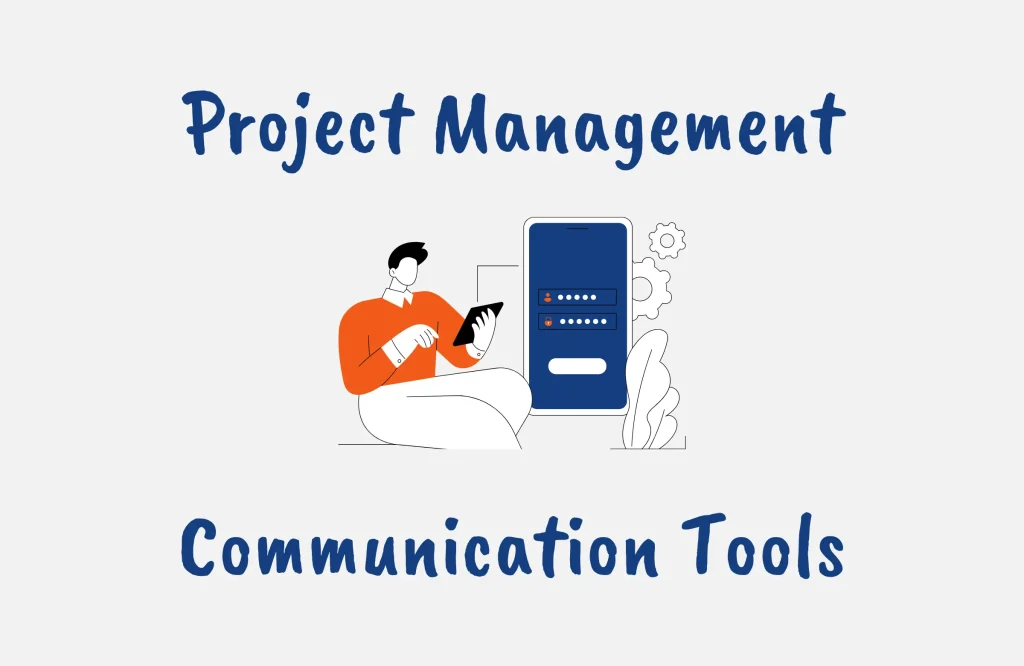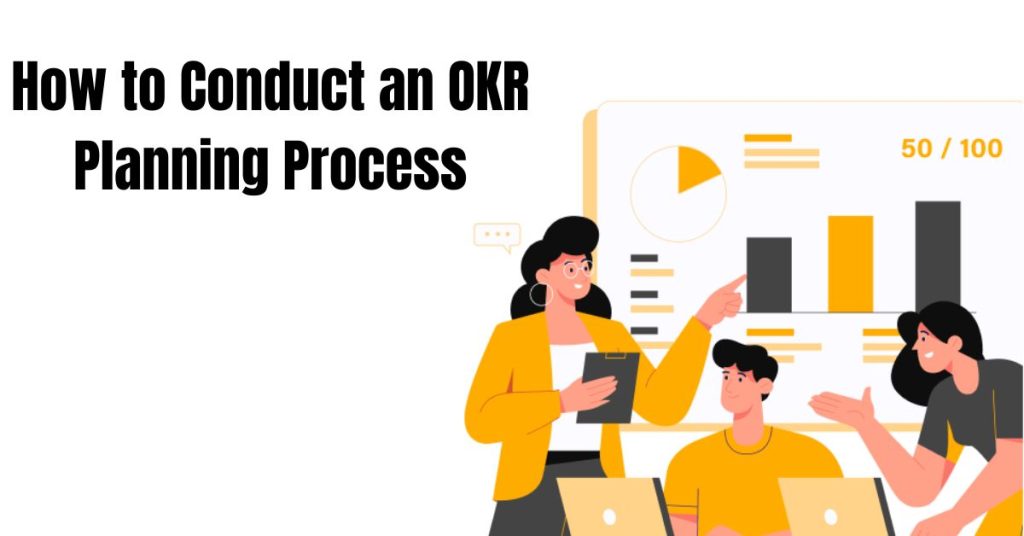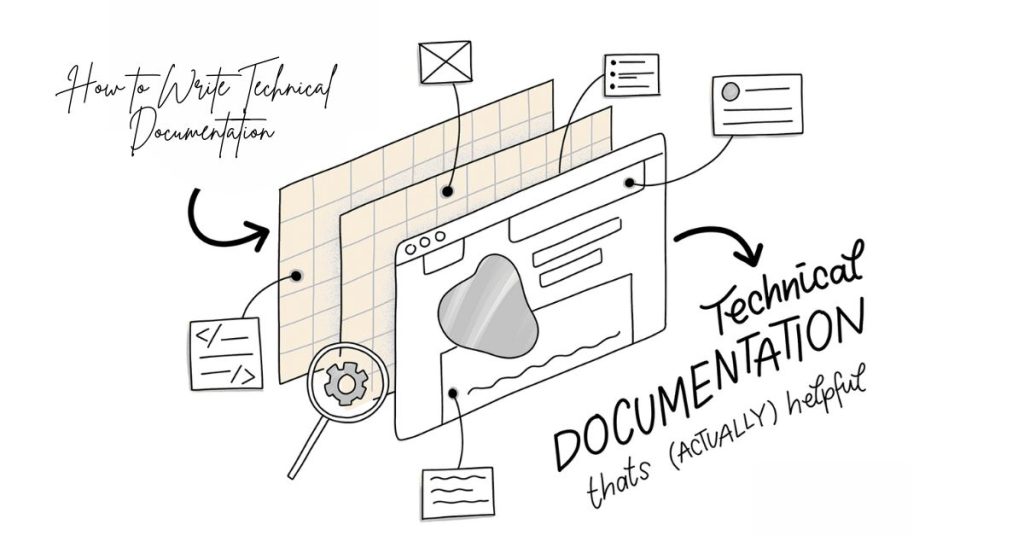In the realm of business, contracts serve as the backbone of transactions, agreements, and legal relationships. Whether you’re purchasing goods, hiring employees, or entering into partnerships, contracts provide a framework for defining rights, responsibilities, and expectations. However, with the advent of digital technology, the landscape of contract management is evolving, with electronic signatures (e-signatures) becoming increasingly prevalent. This article aims to explore the fundamentals of business contracts and shed light on the emerging significance of business contracts and e-signatures in today’s business world.
Importance of Contracts in Business
Contracts are vital tools for managing risks, settling disputes, and upholding compliance in business interactions. They bring clarity and assurance by formally recording the terms and conditions of agreements. Contracts define the responsibilities and entitlements of each party, set timeframes, and specify repercussions for non-adherence. Whether it’s a basic purchase order or an intricate partnership agreement, contracts act as legally enforceable documents safeguarding the concerns of purchasers and vendors, employers and staff, and collaboration partners. Additionally, implementing strategies for streamlining HR processes further enhances operational efficiency and organizational effectiveness.
Introduction to E-Signatures
With the proliferation of digital communication and remote collaboration, traditional pen-and-paper signatures are giving way to electronic signatures. E-signatures, also known as digital signatures, are electronic equivalents of handwritten signatures that are used to sign documents and authenticate transactions online. They offer a convenient and efficient alternative to physical signatures, allowing parties to sign contracts and other legal documents electronically from anywhere in the world. As businesses embrace digital transformation and adopt paperless workflows, the use of e-signatures is becoming increasingly prevalent across industries.

What Are Business Contracts?
Definition and Purpose of Business Contracts
A business contract is a legally binding agreement between two or more parties that outlines the terms and conditions of a transaction or relationship. These agreements can take various forms, from simple purchase orders to complex partnership agreements. The primary purpose of a business contract is to establish the rights and obligations of the parties involved and provide a framework for conducting business in a structured and orderly manner.
At its core, a business contract serves to:
- Define the scope of the agreement: Contracts specify the goods or services being exchanged, the timeline for delivery or performance, and any conditions or limitations associated with the transaction.
- Allocate risks and responsibilities: Contracts allocate risks between the parties by outlining who bears responsibility for certain outcomes or events, such as product defects, delays, or breaches of contract.
- Protect the interests of the parties: Contracts include provisions to safeguard the interests of the parties involved, such as confidentiality clauses, intellectual property rights, and dispute resolution mechanisms.
- Establish legal enforceability: By documenting the agreement in writing and obtaining the signatures of the parties involved, contracts create legally binding obligations that can be enforced in a court of law if necessary.
Key Components of a Business Contract
While the specific terms and conditions of a business contract may vary depending on the nature of the agreement, several essential components are typically included in most contracts:
- Parties to the Contract: Identifies the individuals or entities agreeing and their respective roles and responsibilities.
- Offer and Acceptance: Clearly states the terms of the offer made by one party and the acceptance of those terms by the other party.
- Consideration: Refers to the exchange of something of value (e.g., money, goods, services) between the parties as part of the agreement.
- Mutual Assent: Confirms that both parties have a meeting of the minds and agree to be bound by the terms of the contract.
- Legal Purpose: Ensures that the contract is not illegal or against public policy.
- Specific Terms and Conditions: Details the rights, obligations, and responsibilities of each party, including payment terms, delivery schedules, performance standards, and termination provisions.
- Signature of the Parties: Indicates the parties’ intention to be bound by the terms of the contract and their agreement to comply with its provisions.
Importance of Clarity and Specificity in Contracts
Clarity and specificity are essential qualities of a well-drafted contract. Clear and precise language helps to avoid misunderstandings, ambiguities, and disputes that can arise from vague or ambiguous terms. By clearly defining the rights and obligations of the parties and specifying the terms of the agreement in detail, contracts provide a roadmap for navigating the transaction and resolving potential conflicts.
Moreover, clear and specific contracts are more likely to be enforceable in a court of law. Judges and arbitrators rely on the language of the contract to interpret the parties’ intentions and determine their legal rights and responsibilities. Therefore, it is crucial to take the time to draft contracts carefully, paying attention to detail and ensuring that all terms are articulated and understood by all parties involved.
Types of Business Contracts
Overview of Different Types of Contracts
Business contracts come in various forms, tailored to meet the specific needs and requirements of different transactions and relationships. Here’s an overview of some common types of business contracts:
- Sales Contracts: Sales contracts, also known as purchase agreements or sales agreements, outline the terms and conditions of a sale transaction between a buyer and a seller. These contracts typically specify the goods or services being sold, the purchase price, payment terms, delivery arrangements, and warranties.
- Employment Contracts: Employment contracts establish the terms of employment between an employer and an employee. These contracts may include details such as job responsibilities, compensation, benefits, working hours, termination provisions, and confidentiality agreements.
- Partnership Agreements: Partnership agreements govern the rights and responsibilities of partners in a business partnership. These contracts outline the roles and contributions of each partner, profit-sharing arrangements, decision-making processes, dispute-resolution mechanisms, and procedures for admitting new partners or dissolving the partnership.
- Service Agreements: Service agreements, also known as service contracts or consulting agreements, define the terms of a service arrangement between a service provider and a client. These contracts specify the scope of services to be provided, the payment structure, performance standards, confidentiality obligations, and liability limitations.
- Lease Agreements: Lease agreements govern the rental of real estate or personal property between a landlord and a tenant. These contracts detail the terms of the lease, including the duration of the lease term, rent payments, security deposits, maintenance responsibilities, and provisions for lease renewal or termination.
Examples and Scenarios Illustrating Each Type of Contract
Sales Contract Example:
Scenario: John owns a small electronics store and wants to purchase new inventory from a supplier.
Details: John enters into a sales contract with the supplier, specifying the quantity and type of electronic goods to be purchased, the unit price, payment terms (e.g., 30-day net), delivery schedule, and warranties for defective products.
Employment Contract Example:
Scenario: Sarah is offered a job as a marketing manager at a digital marketing agency.
Details: Sarah’s employment contract outlines her job title, responsibilities (e.g., developing marketing campaigns, managing social media accounts), salary, bonus structure, benefits (e.g., health insurance, retirement plan), working hours, vacation days, confidentiality obligations, and termination provisions.
Partnership Agreement Example:
Scenario: Tom and Jerry decide to start a graphic design studio together.
Details: Tom and Jerry draft a partnership agreement outlining each partner’s role and responsibilities, ownership percentage, capital contributions, profit-sharing arrangement (e.g., 50-50 split), decision-making process (e.g., unanimous vote), dispute resolution procedures, and procedures for admitting new partners or dissolving the partnership.
Understanding E-Signatures
In today’s digital age, the traditional method of signing documents with pen and paper is being replaced by electronic signatures (e-signatures). Let’s explore the definition, legality, benefits, and regulatory landscape surrounding e-signatures in business transactions.
Definition and Legality of Electronic Signatures
An electronic signature, or e-signature, is a digital representation of a person’s handwritten signature used to sign electronic documents. E-signatures can take various forms, including typed names, scanned signatures, digital signatures, or unique identifiers such as PINs or passwords.
In most jurisdictions, e-signatures are legally recognized and considered valid and enforceable, provided certain requirements are met. These requirements typically include:
- Intent to Sign: The signer must demonstrate clear intent to sign the document electronically.
- Consent: All parties involved must consent to the use of electronic signatures.
- Identity Verification: The signer’s identity must be verified to ensure the signature is authentic.
- Audit Trail: The electronic signature process must generate an audit trail or record of the signing process, including timestamps and other relevant information.
- Security Measures: The electronic signature system must employ security measures to prevent tampering or unauthorized access.
Various laws and regulations, such as the Electronic Signatures in Global and National Commerce Act (ESIGN) in the United States and the eIDAS Regulation in the European Union, govern the use of electronic signatures and provide legal frameworks for their validity and enforceability.
Benefits of Using E-Signatures in Business Transactions
The adoption of e-signatures offers numerous benefits for businesses, including:
- Increased Efficiency: E-signatures streamline the signing process, eliminating the need for printing, scanning, faxing, or mailing paper documents. This reduces turnaround times and accelerates transaction cycles.
- Cost Savings: By eliminating paper-based processes and associated costs (e.g., printing, postage, storage), businesses can achieve significant cost savings over time.
- Convenience: E-signatures allow parties to sign documents remotely from any location with an internet connection, facilitating faster decision-making and reducing administrative burdens.
- Improved Security: Many e-signature platforms offer advanced security features, such as encryption, authentication, and audit trails, to ensure the integrity and confidentiality of signed documents.
- Environmental Sustainability: The transition to paperless workflows reduces paper consumption and environmental impact, contributing to sustainability efforts.
Overview of Electronic Signature Laws and Regulations
Governments around the world have enacted laws and regulations to govern the use of electronic signatures and ensure their legal validity and enforceability. These laws typically address issues such as:
- Recognition of E-Signatures: Clarifying that electronic signatures are legally equivalent to handwritten signatures for most purposes.
- Consumer Protection: Ensuring that consumers are adequately informed about their rights and protections when using electronic signatures.
- Data Privacy and Security: Establishing requirements for the secure transmission, storage, and handling of electronic signatures and associated data.
- Interoperability: Promoting the interoperability of electronic signature systems across different platforms and jurisdictions.
Businesses must familiarize themselves with the electronic signature laws and regulations applicable to their operations to ensure compliance avoid legal risks and ensure the enforceability of electronically signed documents.
Advantages of E-Signatures in Business Contracts
Incorporating electronic signatures (e-signatures) into business contracts offers a multitude of advantages, ranging from efficiency and convenience to enhanced security and environmental sustainability. Let’s explore these benefits in detail:
Efficiency and Convenience
One of the primary advantages of e-signatures is the significant improvement in efficiency and convenience they offer. By digitizing the signing process, businesses can streamline their contract workflows and eliminate the need for manual handling of paper documents. Key benefits include:
- Faster Turnaround Times: E-signatures enable contracts to be signed and executed in minutes or hours, rather than days or weeks, reducing delays and accelerating transaction cycles.
- Remote Signing: With e-signatures, signatories can sign documents from anywhere with an internet connection, eliminating the need for in-person meetings or physical presence.
- Real-Time Tracking: E-signature platforms provide real-time tracking and notifications, allowing users to monitor the status of documents and identify bottlenecks or delays in the signing process.
- Simplified Document Management: E-signature solutions often include features for document storage, organization, and retrieval, making it easier to manage and track contracts throughout their lifecycle.
Cost Savings and Environmental Benefits
In addition to improving efficiency and convenience, e-signatures offer tangible cost savings and environmental benefits for businesses. By transitioning to paperless contract workflows, organizations can reduce operational expenses and minimize their environmental footprint. Key advantages include:
- Reduced Paper and Printing Costs: E-signatures eliminate the need for paper-based contracts, reducing expenses related to printing, copying, and storing physical documents.
- Lower Administrative Costs: Automated contract management processes associated with e-signatures reduce administrative burdens and free up valuable time and resources for more strategic activities.
- Environmental Sustainability: The shift to paperless workflows reduces paper consumption, waste generation, and carbon emissions, contributing to environmental sustainability efforts and corporate social responsibility initiatives.
Enhanced Security and Authentication Measures
Security is a paramount concern in contract management, and e-signature solutions offer robust security and authentication measures to protect the integrity and confidentiality of signed documents. Key features include:
- Encryption: E-signature platforms use encryption technology to secure documents and prevent unauthorized access or tampering during transmission and storage.
- Authentication Methods: E-signature solutions offer various authentication methods, such as password protection, biometric verification, and multi-factor authentication, to ensure that signatories are who they claim to be.
- Audit Trails: E-signature platforms generate comprehensive audit trails or logs that record every step of the signing process, including timestamps, IP addresses, and user actions, providing an indisputable record of document activity.
- Compliance with Regulations: E-signature solutions comply with industry standards and regulatory requirements, such as the Electronic Signatures in Global and National Commerce Act (ESIGN) in the United States and the eIDAS Regulation in the European Union, ensuring the legal validity and enforceability of electronic signed documents.
Challenges and Considerations
While electronic signatures (e-signatures) offer numerous benefits for businesses, it’s essential to be aware of potential challenges and considerations when implementing e-signature solutions. Let’s explore these factors in detail:
Potential Drawbacks and Limitations of E-Signatures
Despite their advantages, e-signatures may have certain drawbacks and limitations that businesses should consider:
- Legal Recognition: While e-signatures are generally legally recognized and enforceable, there may be instances where their validity is challenged in court. Factors such as inadequate authentication methods or non-compliance with legal requirements could impact the enforceability of electronically signed documents.
- Security Risks: E-signature platforms are susceptible to security breaches, such as hacking, phishing attacks, or malware infections, which could compromise the confidentiality and integrity of signed documents. Businesses must implement robust security measures to protect against these risks.
- Technological Dependencies: E-signature solutions rely on technology infrastructure, including internet connectivity, software applications, and electronic devices. Technical glitches, system failures, or compatibility issues could disrupt the signing process and hinder business operations.
- User Adoption: Some individuals may be resistant to using e-signatures due to concerns about technology literacy, privacy, or trust. Businesses must provide adequate training and support to ensure user adoption and compliance with e-signature policies.
Factors to Consider When Choosing an E-Signature Solution
When selecting an e-signature solution for your business, it’s essential to consider several factors to ensure that the chosen platform meets your needs and requirements:
- Security Features: Evaluate the security measures implemented by the e-signature solution, such as encryption, authentication methods, audit trails, and compliance with industry standards (e.g., ISO 27001).
- User Experience: Consider the ease of use and intuitiveness of the e-signature platform for both signers and administrators. A user-friendly interface and streamlined signing process can enhance user adoption and productivity.
- Integration Capabilities: Assess the compatibility of the e-signature solution with your existing software systems and workflows. Look for integration options with popular business applications, such as document management systems, CRM software, and cloud storage platforms.
- Scalability and Flexibility: Choose an e-signature solution that can scale with your business growth and accommodate changing needs and preferences. Look for customizable features, pricing plans, and deployment options (e.g., cloud-based, on-premises) to adapt to evolving requirements.
- Compliance and Legal Validity: Ensure that the e-signature solution complies with relevant laws and regulations governing electronic signatures in your jurisdiction. Look for certifications and audits (e.g., SOC 2, HIPAA) that demonstrate compliance with industry standards and security best practices.
Ensuring Compliance with Legal Requirements and Industry Standards
To mitigate legal risks and ensure compliance with regulatory requirements and industry standards, businesses should:
- Conduct Due Diligence: Thoroughly research and evaluate e-signature solutions to ensure that they meet legal standards and industry best practices for electronic signatures.
- Consult Legal Experts: Seek guidance from legal professionals specializing in contract law and electronic signatures to ensure that your e-signature processes comply with relevant laws and regulations.
- Implement Policies and Procedures: Develop and document internal policies and procedures for using e-signatures, including guidelines for authentication, authorization, recordkeeping, and audit trails.
- Stay Informed: Stay up-to-date on changes to e-signature laws and regulations in your jurisdiction and industry. Monitor legal developments and industry trends to ensure ongoing compliance and risk management.
Best Practices for Creating and Executing Business Contracts
Creating and executing business contracts effectively is essential for ensuring clarity, enforceability, and compliance with legal requirements. Let’s explore some best practices to follow throughout the contract lifecycle:
Tips for Drafting Clear and Enforceable Contracts
Drafting clear and enforceable contracts is crucial for minimizing misunderstandings, disputes, and legal risks. Consider the following tips when drafting contracts:
- Use Clear and Precise Language: Use plain language and avoid legal jargon to ensure that the terms of the contract are easily understood by all parties involved.
- Define Key Terms and Concepts: Clearly define key terms and concepts used in the contract to avoid ambiguity and misinterpretation.
- Be Specific and Detailed: Provide specific details and specifications regarding the rights, obligations, and responsibilities of each party, including deliverables, timelines, payment terms, and dispute resolution procedures.
- Include Appropriate Boilerplate Clauses: Incorporate standard boilerplate clauses, such as termination, indemnification, and governing law provisions, to address common contractual issues and protect the interests of the parties.
- Anticipate Potential Issues: Identify potential risks and contingencies upfront and include provisions in the contract to address them, such as force majeure clauses, dispute resolution mechanisms, and remedies for breach of contract.
- Seek Legal Advice: Consult with legal professionals specializing in contract law to review and finalize the contract to ensure compliance with applicable laws and regulations and mitigate legal risks.
Steps to Follow When Negotiating and Finalizing Contracts
Negotiating and finalizing contracts require careful planning, communication, and attention to detail. Follow these steps to navigate the negotiation and finalization process effectively:
- Preparation: Gather all relevant information, documents, and stakeholders before entering into contract negotiations. Define your objectives, priorities, and boundaries to guide the negotiation process.
- Negotiation: Engage in open and transparent negotiations with the other party to reach a mutually beneficial agreement. Communicate your needs, concerns, and expectations while actively listening to the other party’s perspective.
- Documentation: Document all agreements, revisions, and concessions made during the negotiation process in writing to ensure clarity and avoid misunderstandings.
- Review and Approval: Once the terms of the contract are finalized, review the contract carefully to ensure accuracy and completeness. Obtain approval from all relevant stakeholders before proceeding to execution.
- Execution: Execute the contract according to the agreed-upon signing process, whether through traditional pen-and-paper signatures or electronic signatures. Ensure that all parties sign the contract by the specified requirements.
Implementing Effective Contract Management Processes
Implementing effective contract management processes is essential for maximizing the value and minimizing the risks associated with business contracts. Consider the following practices for managing contracts efficiently:
- Centralized Repository: Maintain a centralized repository or electronic database to store and organize all contract documents and related information for easy access and retrieval.
- Document Version Control: Implement document version control mechanisms to track revisions, updates, and changes made to contract documents over time.
- Alerts and Reminders: Set up alerts and reminders for key contract milestones, deadlines, and renewal dates to ensure timely action and compliance with contractual obligations.
- Contract Tracking and Reporting: Use contract management software or tools to track contract performance, monitor key metrics, and generate reports for analysis and decision-making.
- Contract Audits and Reviews: Conduct periodic audits and reviews of contract portfolios to identify risks, opportunities, and areas for improvement in contract management processes.
Future Trends and Innovations
As technology continues to advance, the landscape of contract management and e-signature solutions is evolving rapidly. Let’s explore emerging trends and predictions for the future of business contracts and e-signatures:
Emerging Technologies Shaping the Future of Contract Management
1. Artificial Intelligence (AI) and Machine Learning:
Potential Impact: AI and machine learning technologies have the potential to revolutionize contract management by automating contract creation, analysis, and review processes. These technologies can extract key insights from contracts, identify risks, and optimize contract performance.
2. Blockchain Technology:
Potential Impact: Blockchain technology offers decentralized, secure, and tamper-proof record-keeping capabilities, making it well-suited for contract management applications. Blockchain-based smart contracts could enable self-executing contracts with predefined conditions and automatic enforcement mechanisms.
3. Internet of Things (IoT):
Potential Impact: IoT devices can generate vast amounts of data that can be integrated into contracts to enable dynamic pricing, performance-based contracting, and real-time monitoring of contract performance. IoT-enabled contracts could facilitate innovative business models and value-added services.
Predictions for the Evolution of E-Signature Solutions and Legal Frameworks
1. Increased Adoption of Mobile E-Signatures:
Prediction: With the proliferation of mobile devices and the rise of remote work, there will be an increased demand for mobile-friendly e-signature solutions that enable signing on-the-go from smartphones and tablets.
2. Enhanced Security and Authentication Measures:
Prediction: E-signature solutions will continue to invest in advanced security features, such as biometric authentication, blockchain-based encryption, and identity verification, to ensure the integrity and confidentiality of signed documents.
3. Integration with Emerging Technologies:
Prediction: E-signature solutions will increasingly integrate with emerging technologies, such as AI, blockchain, and IoT, to offer enhanced functionality, automation, and interoperability with other business systems.

Conclusion
As businesses embrace digital transformation and adapt to changing market dynamics, understanding the basics of business contracts and e-signatures is essential for driving efficiency, mitigating risks, and fostering innovation. By staying informed about emerging trends and innovations in contract management and e-signature solutions, businesses can position themselves for success in the digital economy.
Whether it’s leveraging emerging technologies like AI and blockchain or adapting to evolving legal frameworks and industry standards, businesses must remain agile and proactive in their approach to contract management and e-signature adoption.
By embracing the opportunities presented by digital technology and staying ahead of the curve, businesses can streamline their contract workflows, enhance collaboration, and unlock new possibilities for growth and success in the years to come.











